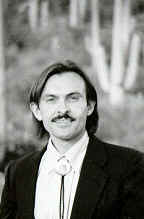I'm going to say the spirits led me there. I'm going to say it happened because I stopped thinking too much, and prayed like I did yesterday; for six hours I prayed in ceremony about being where I can do the most good that I can, asking for help for the spirits to lead me in the direction in which this can happen. If the future does pull us toward it, then I wish for this future of work happiness to pull me there. My heart would prefer it to be near the coast, for I love the ocean, or in Vermont, because Vermont is magic itself (most of the time). But, spirits, I will go anywhere. So that's what I would create if I could wave my magic wand.
But, before we stop, we have to ask where this concept of a magic wand arose?
In
ecclesiastical and formal government ceremonies,
some officials carry a wand of office
or a staff of office that represents their power [1]. Stone Age cave paintings show people
holding sticks, which may have represented their power.In Egypt during the time of the
Pharoahs, a magic wand was left in tombs to enable the soul (ba) to use the other objects left there
(toilette articles, weapons, amulets, and magic texts). Six to eight-foot-long staves with
metal tips adorning them are carried traditionally in Freemasonry rituals. Wicca practitioners
use wands to channel energy, to invite or encourage. Though traditionally made of wood,
wands can also be made of metal or crystal. A magic wand may be
transformed into other items, grow, vanish, move, display a will of its own, or
behave magically in its own right [2]. The earliest
magical wand in Europe appeared in the Odyssey when Circe used one to
transform Odysseus's men into wild beasts. In Italian fairy
tales
powerful fairies used magical wands in the late Middle Ages. [3] In ballads
such as Allison Gross and The Laily Worm and the
Machrel of the Sea, villainesses used silver wands to transform their victims. In The
Chronicles of Narnia: The Lion, the Witch and the Wardrobe, the White
Witch used a wand to turn people into stone. In dramatic fiction, wands can serve as
weapons in magical duels. Personal wands are common Harry
Potter's
world, as necessary tools to channel out each character's magic; it is the wand
that chooses its owner. Glinda, the Good
Witch of the South, from the Land
of Oz
novels by L. Frank Baum carried a
wand through which she channeled her magic.
The essence of all this is the power to make people or nature behave as one would want. We crave the image of power in the face of our recognition of our powerlessness. We want someone to have the power to save us; hence, the stories about aliens who will save us from our bent toward nuclear destruction.
Yet, in particular cultural contexts we can have enormous power to influence others. In the boning custom in Africa, tribal elders pointed a bone at a member who had broken a taboo or made some other serious transgression, and shortly thereafter, that person died. Imagine how surprised these elders were when boning did not work on the Europeans. Voodoo is known to work in similar ways. Within particular cultural contexts, we can all belief sufficiently strongly that spells can work and people can magically die. The physiologist Walter Cannon explained boning deaths as autonomic nervous system collapse, and voodoo has similar explanations, but nevertheless, the people do actually die.
In our training, we focused upon the power we have to do good for others. The most important power we have is to cast a spell in which we believe in the other's capacity to get well. This was contrasted with modern medicine, which often casts a spell to convince people that they can never get well, or that they will be on medicine for life, or the like.
In medicine we often hear that we shouldn't give people false hope, lest they be disappointed. I suppose we fear that if they are disappointed, they will become angry with us, and then sue us for not curing them. I suspect that crucial to this idea is our lack of belief in self-healing and spiritual or spontaneous healing. If we only believe people can recover based upon what we can do and we don't believe that nature heals, or spirits heal, or God heals, or people heal themselves, then, if we can't do anything, we try to convince people that they can't heal, so that they won't get angry with us.
I learned from indigenous elders that there is no false hope. Medicine confuses hope with unrealistic appraisal. When we have both hope and realistic appraisal, we can hold onto the possibility of recovery even while knowing that one is really sick. Hope is not the same as realistic appraisal. An elder told me that we cannot heal if we do not believe it is possible.
References




